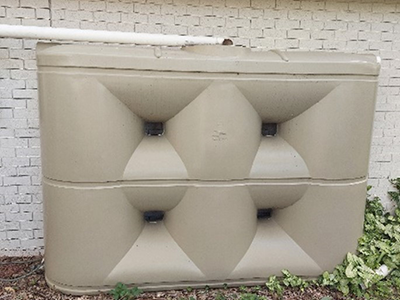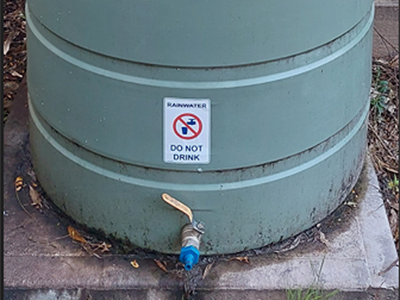Stormwater and its impact
- Details
- Written by: Jeremy Bentvelzen Penrith City Council (02) 4732 7777 (02) 4732 7958 council@penrithcity.nsw.gov.au https://www.penrithcity.nsw.gov.au 601 High St Penrith NSW 2750 Australia
Stormwater Management
Stormwater is rainwater that doesn't soak into the ground but flows from roofs, driveways, gutters, and roads into the stormwater system. Urban environments generate a lot of stormwater because of the many hard surfaces.
Stormwater runs into our creeks and rivers. Unlike sewage, it isn't treated before it goes into the waterways.
When rain falls on vegetated areas such as bushland it is filtered by soil and plants, and soaks back into the ground. When rain falls on hard surfaces such as rooftops and roads it cannot soak into the ground and becomes stormwater runoff. Stormwater runoff picks up pollution such as nutrients, dirt, chemicals, and litter, carrying them into stormwater drains and into waterways.
Types of stormwater pollutants
Nutrient pollution
Nutrient pollution is the process were too many nutrients such as nitrogen and phosphorus enter the waterways. Excessive amounts of nutrients can cause algal growth in waterways, leading to algae blooms. Algae blooms can deplete rivers of oxygen, reduce the ability of fish and other aquatic life to find food, and create dead zones.
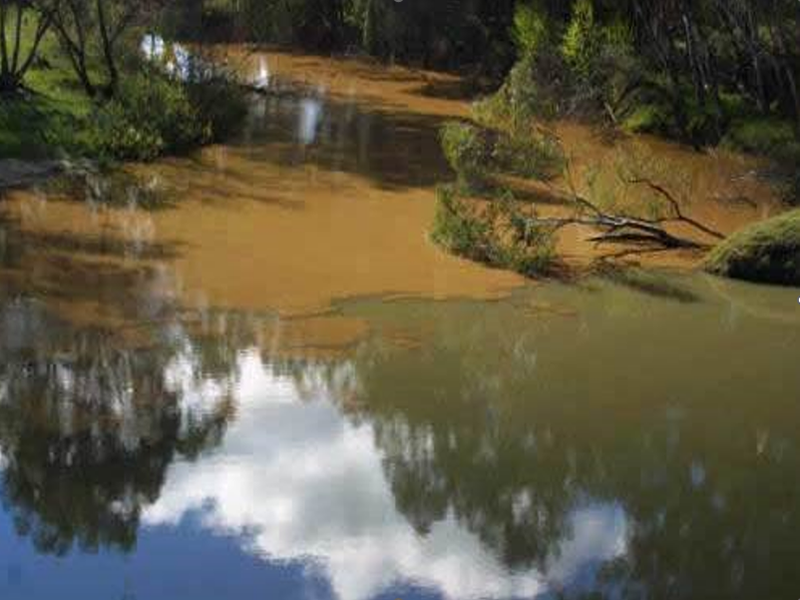
Algae bloom
Litter pollution
Litter is any physical pollution that enters the stormwater system, including leaf litter. When litter enters the waterways it become a problem for animals, who might eat litter such as plastic, or become entangled in it. Organic material such as leaf litter can cause problems in our waterways too, because as it breaks down, it consumes oxygen and releases nutrients, polluting the river.
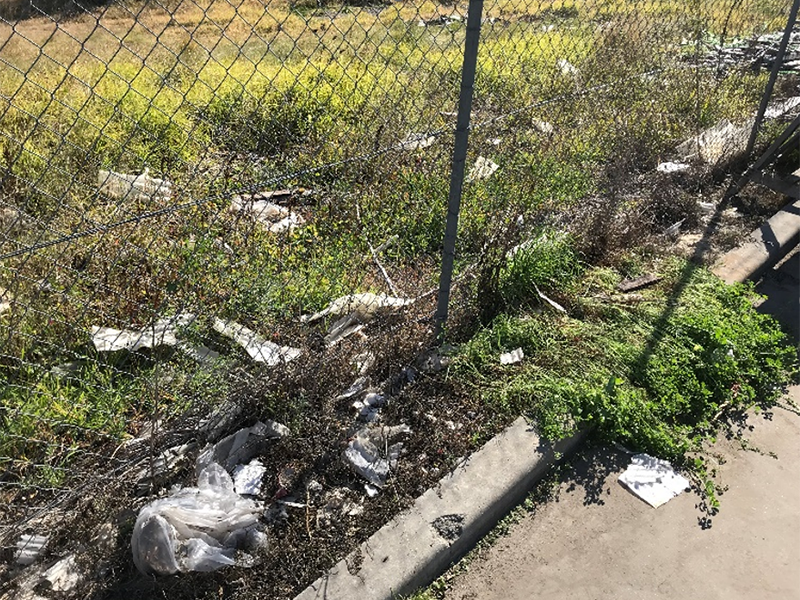
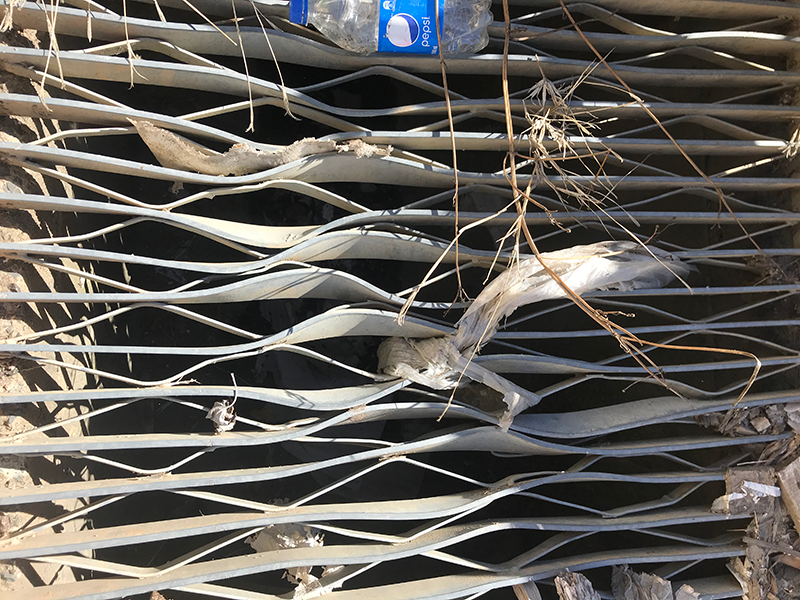
Bank erosion and creek stability
Over time, waterways erode their banks, and creek and riverbanks can become unstable and cause a risk to public safety. Within urban environments this process is sped up by increased runoff from impervious areas such as roofs, roads, and pavements. This also results in sediment and nutrients entering the waterways, reducing the water quality.
The Peach Tree Creek bank stabilisation project is an example of works undertaken to help protect waterways and the public from the impacts of bank erosion.
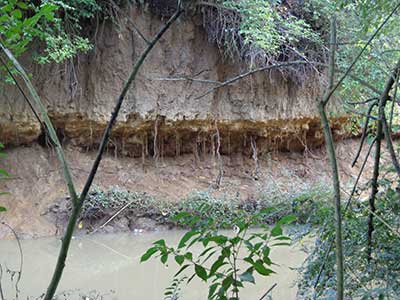

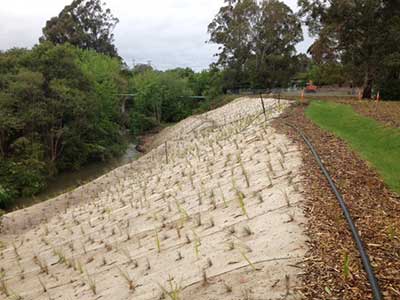
WSUD and mitigating urban heat
As urban development occurs, it replaces natural land and vegetation with hard structures and impervious surfaces like roads, footpaths, car parks, and buildings. These surfaces absorb more heat than vegetation and encourage rainfall to run off the surface, leaving little moisture in the ground.
Water Sensitive Urban Design aims to reduce urban heat by reducing the amount of impervious surfaces, and replacing them with systems that help mimic natural environments. Bioretention basins, constructed wetlands, grass swales, and raingardens all allow water to seep into the soil, increase vegetation cover and improve the amount of evapotranspiration.
An example of WSUD and urban heat mitigation is the replacement of concrete stormwater channels with vegetated drainage channels. In new developments such as Jordan Springs , there is a requirement to maintain and enhance riparian corridors and creeks, and the use of concrete channels is no longer allowed. The images below depict the difference between concrete channels and vegetated channels.
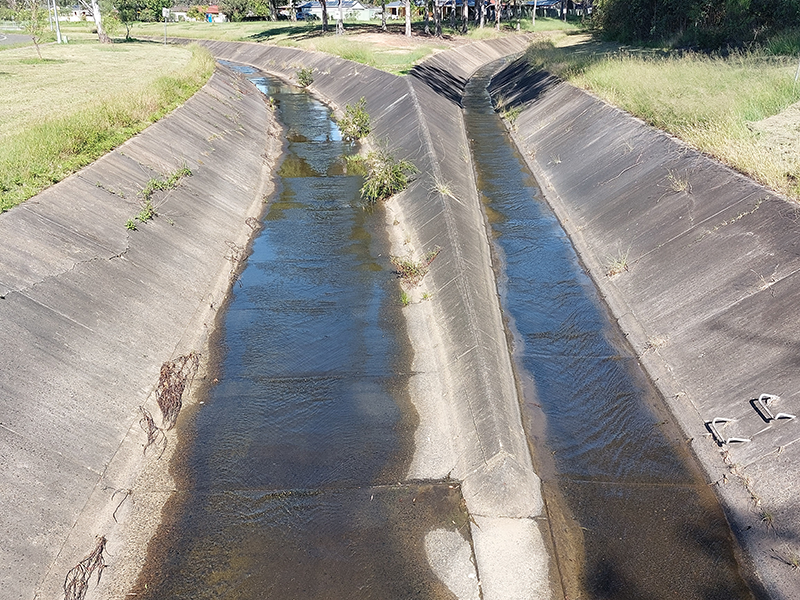
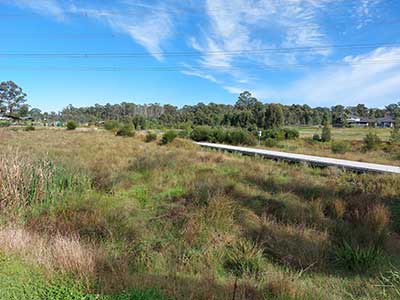
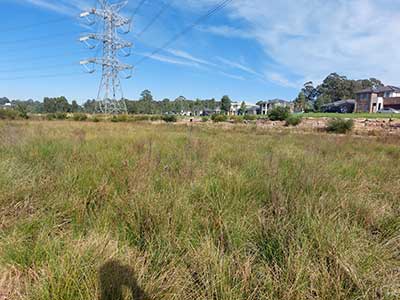
For further information on the Urban heat in Penrith and Council projects please see Cooling the City.
What you can do to help
You can take the following steps to help keep pollutants out of our stormwater to improve the quality of our waterways.
- Do not blow or rake leaves or grass clippings into stormwater drains or the roadside kerb, collect them and place them in the green lid organics bin.
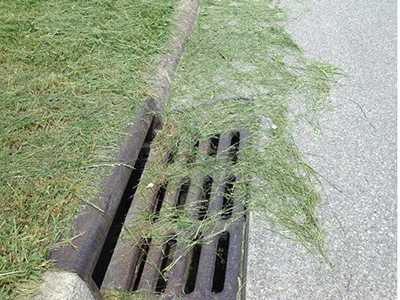
- Dispose of grass clippings, unwanted vegetation and animal waste in the green-lidded FOGO bin.
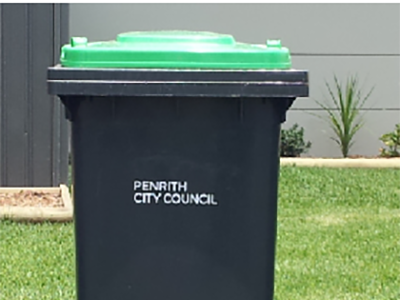
- Plant trees and other vegetation to create a home garden.
- Build a vegetable raingarden at home. Not only will a raingarden capture stormwater runoff from the roof, it will also provide a self-watering vegetable garden for your backyard.
- Download the How to Build a Vegetable Raingarden brochure for step-by-step instructions.
- How to Build a Vegetable Raingarden brochure (Chinese) is also available in Chinese.
- Installing a rainwater tank to your house, shed or carport helps reduce stormwater runoff and peak flow. Rainwater reuse for irrigation, toilet use or washing machines all helps reduce your impact on non-potable water use. Rainwater tanks should be equipped with appropriate signage.
